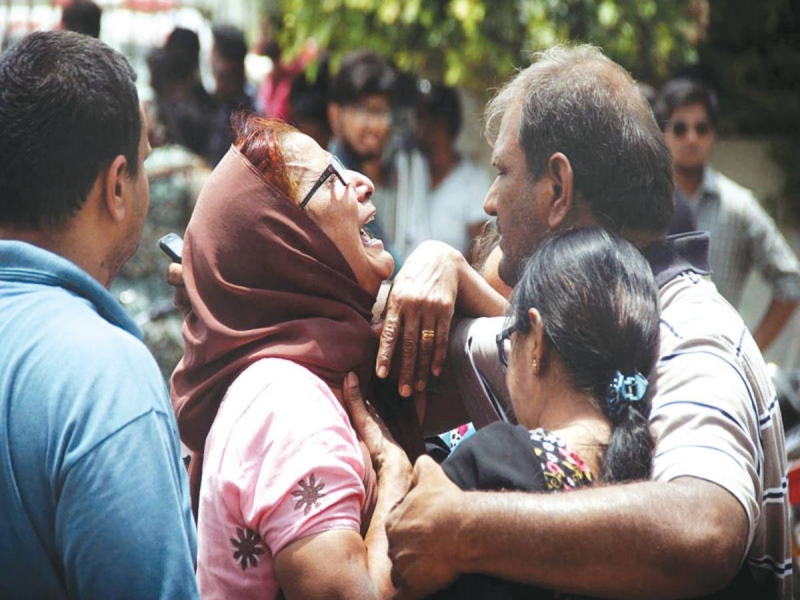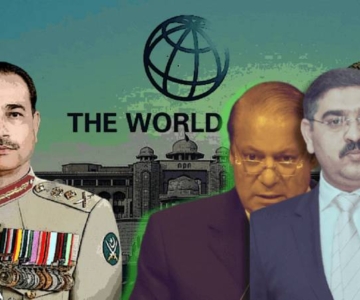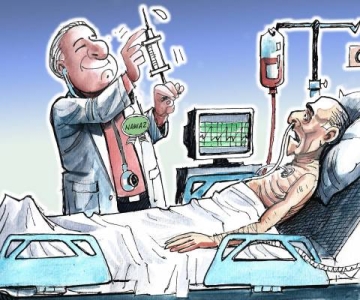The sheer barbarity of the attack on the Ismaili community in Pakistan’s largest and one of the more misgoverned cities shocked the country. It is not the first time that such a sectarian attack has happened. During the past two years, more than a thousand people have been killed in targeted sectarian attacks. However, this was the largest attack on Ismailis. The head of the Ismaili community, Prince Karim Aga Khan, rightly termed the massacre of 43 men and women a senseless act of violence against a peaceful community. It is ironic that the Pakistan movement owes its genesis to the contributions of Sir Sultan Muhammed Shah, Aga Khan III who was the founder, patron and the first president of the All-India Muslim League. In fact, the Quaid-e-Azam was born into an Ismaili household. Today’s Pakistan is clearly an unsafe place for this community.
The National Action Plan (NAP) against terrorism has been under implementation since December. Evidently, it is going nowhere. In January, dozens of worshippers were killed in an imambargah located in Shikarpur, Sindh. There have been several other incidents of sectarian killings and now the Karachi carnage comes as a rude reminder that perhaps, the strategy to fight terrorism is flawed or is just another un-implementable document.
While military action to eliminate hideouts of the Tehreek-e-Taliban Pakistan (TTP) may be a good short-term measure, Pakistan cannot curb the menace of extremism and terrorism without working towards an ideological reorientation. In March, the government reneged on two vital commitments: regulation of religious seminaries and dismantling of proscribed terrorist groups. In fact, such is the power of these militias that they have been openly holding rallies despite the announcement by Prime Minister Nawaz Sharif while launching the NAP that no armed organisation will be allowed to operate.
Hatred for certain sects emanates from the ideological space that a particular school of thought has found in Pakistan. These toxic ideas largely permeate through the ever-growing mosque-madrassa-charity network. Over time, this network has expanded to all provinces and even in urban areas where hybrid madrassas are part of the private schools network. Increased legitimacy of extremist ideas has also come through the social welfare and relief channels that such networks operate.
Radical seminaries have also issued a corpus of edicts since the 1980s when they were first officially promoted to serve the purpose of jihad in Afghanistan (with US and Saudi support). Certain clerics have been active in inciting sectarian hatred through their pronouncements. This body of quasi-theological edicts has gained traction over the decades, and is widely available and reconfirmed across the country thanks to funding from the Gulf states and through in-country philanthropy. Most importantly, such edicts become the justification for massacres such as the one that the country witnessed in Karachi.
Many of the ostensibly banned terrorist outfits grew out of such seminaries. Khaled Ahmed, one of the country’s leading commentators, says that our seminaries have become the most powerful civil society element capable of challenging the state to self-correction.
The Federal Information Minister, Pervez Rasheed, is currently under fire as he made some critical remarks about seminaries in a speech. The Wafaqul Madaris a seminaries syndicate condemned Mr Rasheed for his statement with jihadist groups also joining in the chorus. Now, banners asking for revenge against the issuing of this statement have appeared on the streets. This shows that the clergy has the power to dictate state behaviour; and scores of Pakistanis, radicalised by its ideas, unwittingly strengthen and magnify its influence.
Jundullah, a breakaway faction of the TTP, has claimed responsibility for the Karachi attack. Media reports also mention the discovery of a Daesh or Islamic State (IS) message at the site of the carnage. The presence of the IS in Pakistan or in the South Asian region at large is a matter of debate but in recent months, the radical group has set up camps in eastern Afghanistan. In addition, a BBC report in February pointed out that the jihadist groups marginalised by the Pakistan military’s operations in North Waziristan and elsewhere, could join the IS to rebuild their influence.
However, the narrative being built in the country is that the Indian intelligence agency, the Research and Analysis Wing, is the perpetrator of terrorism in Pakistan. This view has gained credence ever since those in the upper echelons of power issued a statement implicating India as the sponsor of terrorism in the country. This view may be valid but the fact remains that the onus of protecting Pakistanis is on the state authorities, especially our intelligence apparatus whose responsibility it is to detect and prevent such attacks.
These seemingly intractable challenges are compounded by the inability of the civilian governments to initiate much-needed institutional reforms. Karachi, for instance, needs at least twice the number of police personnel than it currently has. There is little evidence that the Sindh government has been addressing such vital issues. Other promises made under the NAP, such as reforming of the criminal justice system, remain hollow pronouncements as little or no progress has been made in this direction so far.
It is also time to review the post-APS internal security management in place. The provincial apex committees, at best, are stopgap arrangements. At the end of the day, civilian institutions, whether they be the police or the courts, have to be strengthened. Counterterrorism strategies worldwide entail intelligence coordination, effective policing and accountable local governments that are rooted in communities. From the larger challenge of countering hate ideologies to improving law enforcement on the ground, civilian governments will have to act to end the culture of impunity that aids and abets terrorism. The time for condemnations, vigils and statements is over. This is the time to act.



